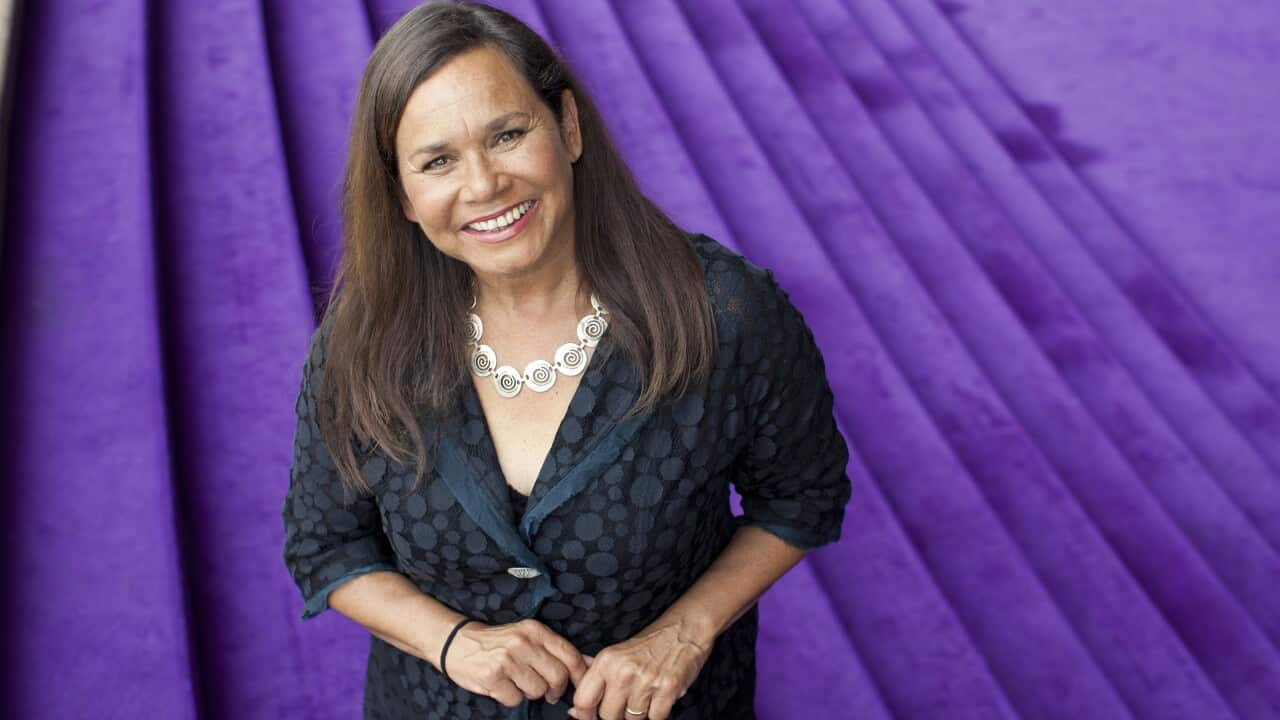You are the Head of Indigenous Programming at one of the most iconic institutions in the country. What role does the Sydney Opera House play in Aboriginal and Torres Strait Islander culture?
The Sydney Opera House leads by actions and example. We are committed to treasuring, nurturing and respecting Australia’s First nations diverse cultures and practice across the arts sectors. Having my role, the Head of Indigenous Programming is an important step, and we have a framework that includes dialogue, outreach, innovation and excellence. My focus on the curatorial side is revisiting ancient elements of cultural and reclamation work, showcasing new works and considering intersection of art and social change. It’s an exciting time!
Over your career, have you seen a change in how general audiences respond to Aboriginal and Torres Strait Islander culture?
Over the last decade we have witnessed an increase in the number of Indigenous theatre productions, film and television screenings and performing arts touring projects across all genres, with a new focus of regional and national venues, partnerships and embedding works across all program sectors. Audiences for all kinds of work are growing, which is great to see.
What does culture mean to you, personally?
Arts, craft and cultural elements have enormous value and capacity that appeal to our imaginations, emotions, and touch the soul.
Arts, craft and cultural elements have enormous value and capacity that appeal to our imaginations, emotions, and touch the soul. Only through new artistic collaborations our interconnected histories, music, dance language, story and food can our cultural expectations and creativity as a nation be achieved. The Sydney Opera House recognises and is committed to the fundamentals of forging new partnerships that continue ongoing reconciliation and a future that embodies all.
What inspires you?
I have been privileged to witness a global cultural resilience and now a new renaissance of our art over the last decade. The forging of varied disciplines and the work of the pioneers who ensured that all Australians, no matter where they live, can share in the richness of our Aboriginal cultural life. I am inspired by so many artists, the poetry of the late Oodgeroo Nooonuccal, the healing of our Nunkeris, and cultural holders such as Rosie Kunoth Monks, the written works of our playwrights such as Kevin Gilbert, the direction of Vivien Walker, the filmmakers like Justine Saunders and the freedom songs of Kev Carmody, The cultural fusion of our songmen, Djakapurra Munyarryun the dance of our women with Roslyn Watson, and the power of our wisdom with arts and cultural Leaders such as Lydia Miller and Richard Franklin.
They have carried the mantle for the writings, songs, dance and story so we will continue to gather and sing up country.
I am inspired by new work from the stage with Shari Sebbens, the Dance with eXcelsior, the music of Eric Avery and the language of Rrarriwuy Hick and the new arts makers such as Nakiah Lui, Carly Sheppard and Travis De Vries continue to inspire me daily as they become the next generation of culture makers.
On a global scale, I am inspired by the voice and cultural resilience of Moana Moniapato NZ, the wisdom and leadership of Denise Bolduc, the films of Gail Maurice and the work of the Sami team at Riddu Riddu and the traditional Healers such as Christine Bullock .. all are inspirations.
Can you tell us how and why Dance Rites came about?
The first peoples of this nation are facing a time like no other, while we are an ever adapting culture, the passing of our cultural custodians, lore men and women who carry the ancient degrees of knowledge is slipping away, with each death a library of profound knowledge, eternal worth and timeless customary value is lost.
The first peoples of this nation are facing a time like no other...
We have seen a groundswell of creative work, there are more projects across the globe, controlled and created from an Aboriginal and or first peoples perspective, the work retains language, revitalising ritual forms, it's exciting and can be edgy to see the fusion of our traditional dance, the maintenance of our mother tongues, first instruments and song practices, combing western creative disciplines, techniques and multimedia.
Critical practice and repatriation are redefining the myth of our lost cultures, our creative practices have enabled Indigenous arts industry workers across all genres a relevant voice, better employment prospects, community outcomes and most importantly the control of how we are perceived.
Taking this into account, and after discussion with community members, the Dancerites project has focused on long-term outcomes that will allow reclamation of traditional practices, which will have meaningful impact for generations to come.
NITV is proud to support : Share First Nations Music Dance and Culture. November 21 & 22.

Source: Supplied









